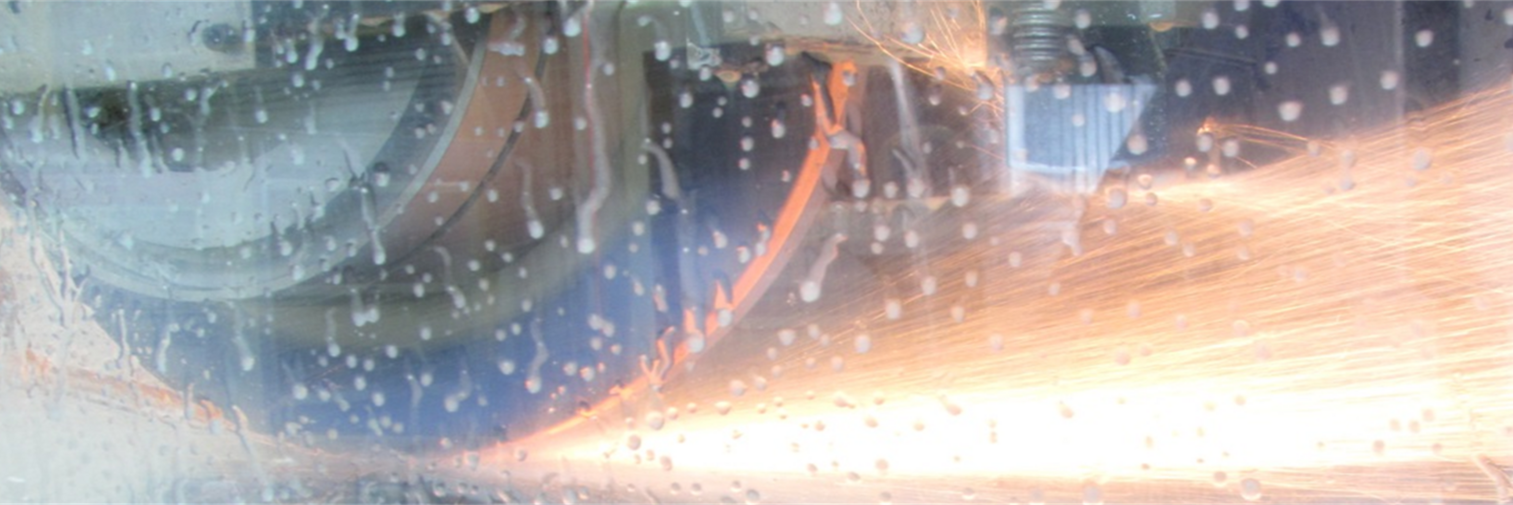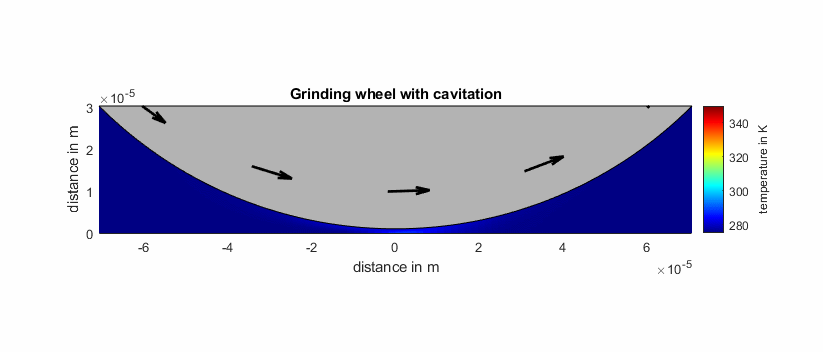
As part of a DFG project, the Friction and Nonlinear Dynamics working group is working on the modeling of wet grinding processes. Wet grinding processes are important manufacturing processes in industrial applications, usually at the end of the process chain, in order to achieve particularly high surface qualities or to machine particularly hard materials. Due to the high heat input, the use of cooling lubricants is necessary in order to maintain surface finishes and prevent structural changes in the material. However, the transportation of the coolant through the grinding gap creates a hydrodynamic load-bearing effect, which causes the grinding wheel to float and thus counteracts the actual aim of the process. In addition, many coolants have a potentially harmful effect on people and the environment.
However, optimizing the process is extremely challenging from a simulation point of view, as a large number of individual sub-processes occur in the overall wet grinding process, which means that even today, process parameters are usually determined by trial and error or based on experience.
Through efficient modelling using isogeometric analysis (IGA) as a resource-saving alternative to classic FEM, the application of the Reynolds equation and further optimizations in modelling, we develop high-performance simulations in the areas of fluid and contact dynamics.
In addition, we are opening up new avenues in the optimization of wet grinding processes and the development of innovative, sustainable cooling lubricants.

Thunich, P., Tong, Y., Müller, M. Efficient modelling of thermo-hydrodynamic properties in lubricated technical systems using NURBS-based isogeometric analysis. Tribology International, Volume 199, 2024. https://doi.org/10.1016/j.triboint.2024.109934
Thunich, P., Schömig, O., Tong, Y., Arafat, R., Herrmann, C., Müller, M. On the validity of the Reynolds equation for the simulation of wet grinding processes. Proceedings in Applied Mathematics and Mechanics, 2023. https://doi.org/10.1002/pamm.202300109
Vacancies of TU Braunschweig
Career Service' Job Exchange
Merchandising
Term Dates
Courses
Degree Programmes
Information for Freshman
TUCard
Technische Universität Braunschweig
Universitätsplatz 2
38106 Braunschweig
P. O. Box: 38092 Braunschweig
GERMANY
Phone: +49 (0) 531 391-0
